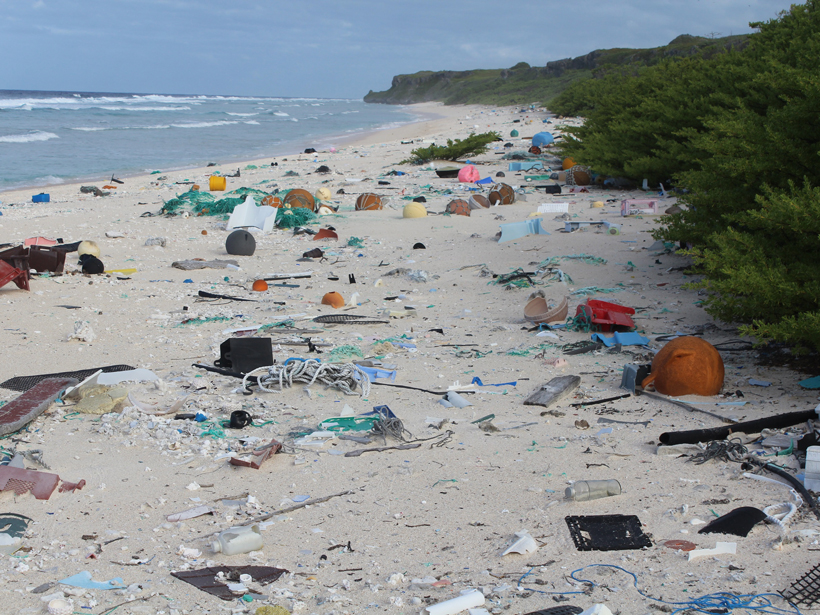It’s like the island of misfit toys, only less endearing. Way out in the South Pacific Ocean, more than 5000 kilometers away from any large land mass, tiny, uninhabited Henderson Island carries the highest density of plastic debris reported anywhere on the planet.
Researchers occasionally visit the island, which is the largest of the United Kingdom’s Pitcairn Islands, but only every 5 to 10 years. This time around, a group from the University of Tasmania in Hobart, Australia, didn’t just find glassy aquamarine waves lapping against pristine, white sand—they found piles and piles of plastic debris. An estimated 37.7 million pieces of plastic, to be precise, weighing as much as 17 metric tons.
The researchers just published a new paper about the plastic-covered island in the Proceedings of the National Academy of Sciences of the United States of America.
The team, led by marine ecotoxicologist Jennifer Lavers, found 671 pieces of plastic every square meter, and that’s not even with a full comb of the island, she said. Their data likely underestimate the actual amount of trash because they picked out only pieces larger than 2 millimeters down to a depth of 10 centimeters into the sand and couldn’t sample along the cliffs and rocky parts of the island. They estimate that more than 3570 new pieces wash up every day on just one of the island’s beaches.
“What’s happened on Henderson Island shows there’s no escaping plastic pollution even in the most distant parts of our oceans,” Lavers said. The trash likely journeys from South America or elsewhere, washed offshore or dumped into the sea by fishing boats.
This plastic threatens marine animals. Not only is it a hazard to eat, the plastic also blocks some animals from moving around the shore. Plastic debris also contributes to lowering biodiversity along coastlines, Lavers said.
Scientists aren’t sure exactly how much plastic swirls around Earth’s oceans, but a 2015 study narrowed that number down to between 4 and 12 million metric tons—that’s 1.5%–4.5% of the world’s annual plastic production. And that plastic waste reaches unexpectedly remote places, like the Arctic seafloor and even along the Mariana Trench wall, one of the deepest places on Earth.
—JoAnna Wendel (@JoAnnaScience), Staff Writer
Citation:
Wendel, J. (2017), Plastic waste knows no bounds, Eos, 98, https://doi.org/10.1029/2017EO074191. Published on 22 May 2017.
Text © 2017. The authors. CC BY-NC-ND 3.0
Except where otherwise noted, images are subject to copyright. Any reuse without express permission from the copyright owner is prohibited.

